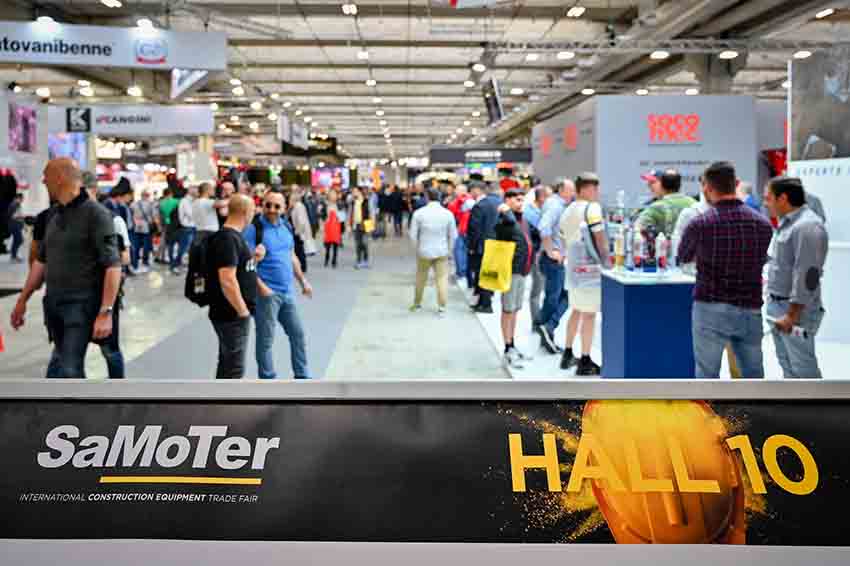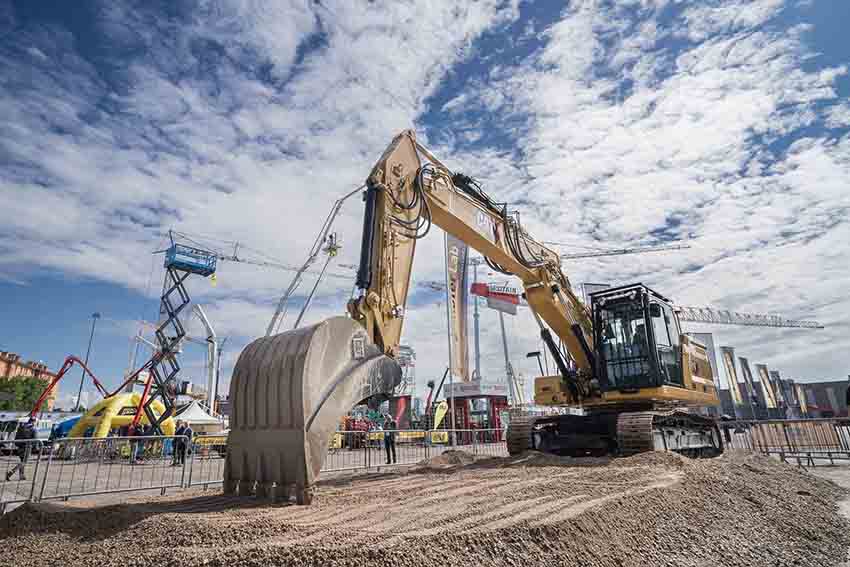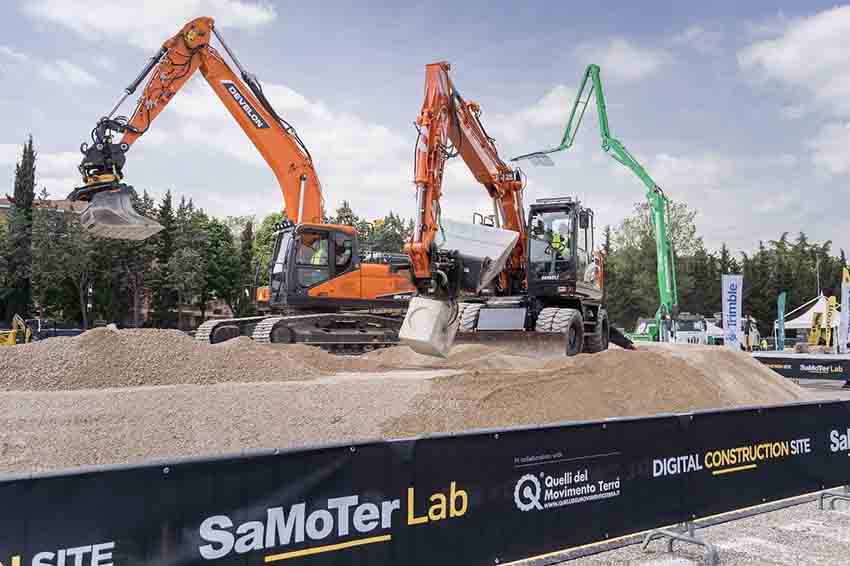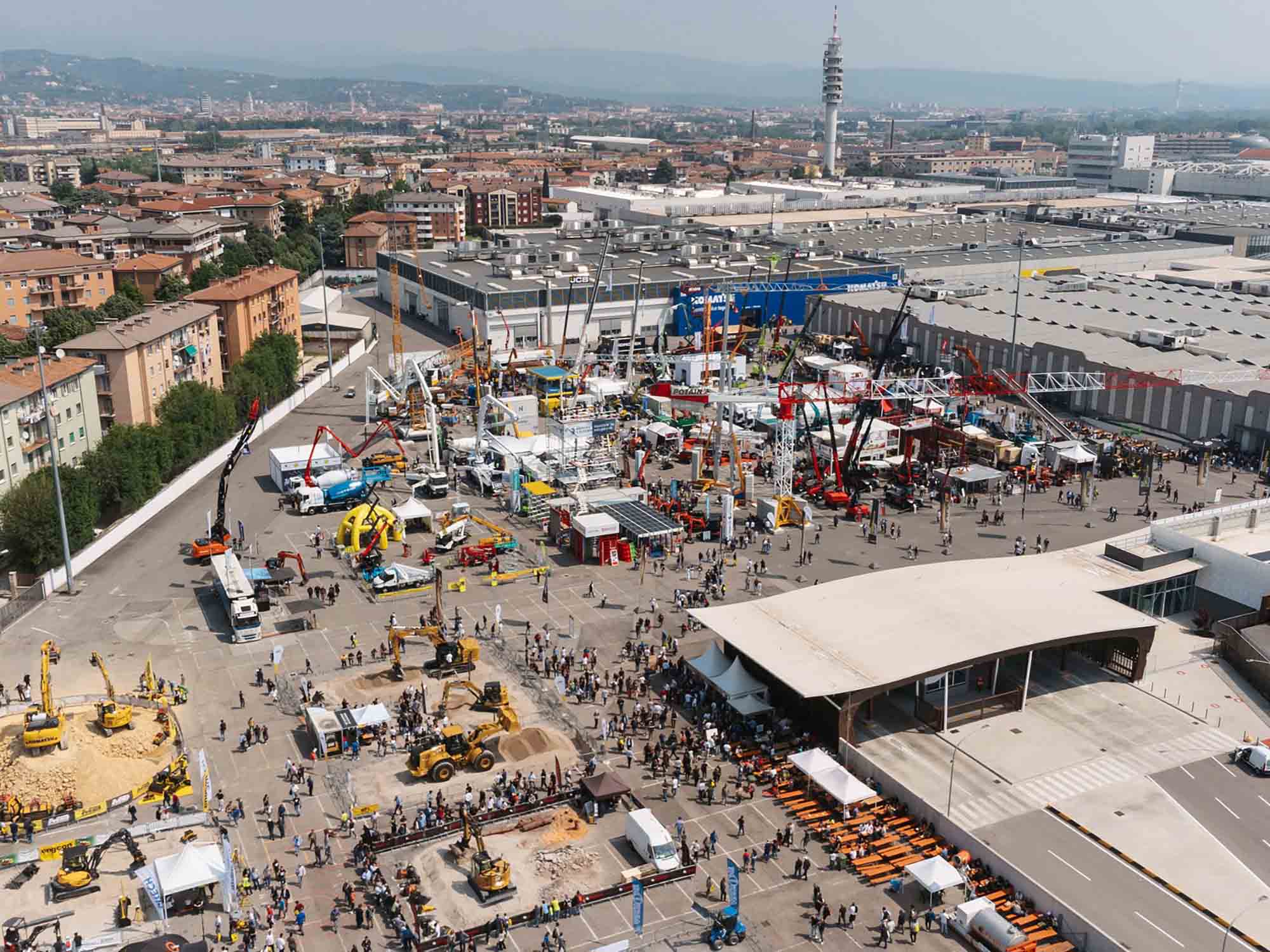SaMoTer was launched in 1964 at Veronafiere to create a specific venue in the Italian exhibition scene focused on earth-moving machinery that since 1948 had already been covered within the scope of the Agricultural Mechanisation Show.
This proved to be a vital decision in line with the needs of small-medium companies in the sector keen to have their own specialist event to exchanges, promotion and comparison with various technical experiences and research and university worlds. SaMoTer later consolidated its status as a landmark exhibition event for the earthmoving sector in Italy, so much so that the 1980s and early 1990s welcomed impressive developments: the globalization of markets imposed new choices, continuous innovation and more targeted promotion.
The show became a triennial event and joined the cycle of European trade fairs under the patronage of CECE (Committee for European Construction Equipment). The ratification of the agreement to alternate scheduling with two other major international trade shows – Intermat in Paris and Bauma in Munich – strengthened the brand and expanded coverage in the sector with the inclusion of other emerging segments: tunnelling, hire/rental, distribution, technical and scientific analysis and research.
A record-breaking edition was held in 2008, with more than 1,000 exhibitors and 100,000 visitors. SaMoTer, on a par with the entire construction sector, then also experienced critical times, such as the global economic crisis in 2010 at first and then the pandemic. SaMoTer is evolving today and therefore greater openness to internationalisation has become vital.
Interview with Raul Barbieri, Sales & Marketing Director of Veronafiere SpA.

Easy Engineering: How was this year’s edition?
Raul Barbieri: It went well, we are satisfied: for a triennial event, making a successful return after 6 years of absence because of the pandemic was not something that could be taken for granted. SaMoTer attracted 536 exhibitors at the Verona Exhibition Centre , 115 international from 23 countries, with the return of major players in the sector such as CGT Caterpillar and Hitachi.
The central role of the show, over and above the number of operators and their satisfaction, was also backed up by institutions: the Minister of Infrastructure and Transport, Matteo Salvini, inaugurated the event, while the Minister of Foreign Affairs and International Cooperation, Antonio Tajani, highlighted how SaMoTer is a vital part of the integrated promotion strategies implemented abroad for Italian companies.
SaMoTer 2023 thereby achieved its goal with an edition that proved to be a full-scale tool for doing business, opening up new markets and getting to know the latest news for companies and many operators arriving from abroad. All this means we worked well as organisers, as a team with Institutions, the local area, the ICE-Trade Agency, all the most important associations in the sectors covered by the show and our exhibitors who understood the value of being part of the SaMoTer community.” The extremely positive results achieved for the 31st SaMoTer are proof that exhibitors and buyers understood and appreciated the event’s new format: innovation was the central theme of this edition, which also welcomed the début of two new areas dedicated to the technological revolution that represents the future of construction machinery. We wanted to bring the exponents in this sector and their needs even closer to the heart of the event by designing SaMoTer to ensure it was worth every euro and minute invested by exhibitors and visitors. We are already working with Unacea on the next edition (6-9 May 2026) – which will certainly build on this experience, especially as regards the digital construction site and the world of sustainability.”

E.E: What were the highlights?
R.B: After six years on the sidelines, SaMoTer came back with several new features. First and foremost, this edition focused closely on recognising and anticipating trends: it offered food for thought as regards evolution in the sector by creating opportunities for comparisons and debate between institutions, research bodies, companies and sector operators. Inasmuch, the 31st SaMoTer focused on two topics of major importance: the ecological transition and the digital transition.
In addition to the exhibition area, we also felt that it was essential, as regards the quality of the event, to highlight content and we therefore created an intense calendar of conferences, workshops and seminars. Yet the absolute innovations were SaMoTer Lab – the beating heart of this edition, which spotlighted the real and concrete implications of the ecological and digital transition – and the Digital Construction Site.
E.E: How many people visited the exhibition and from what domains of activity were they?
R.B: The five days of the event this year attracted more than 40,000 specialist visitors from 91 countries, with Germany, Spain and France in the first three places as regards the number of arrivals, with good attendance also from Asia, Africa, North and South America.

E.E: What important events took place in the exhibition?
R.B: The 31st SaMoTer focused emphatically on the implementation of new technologies in the construction world to help it become increasingly competitive and sustainable. Visitors therefore had the chance see the machinery of the future at work in the new dynamic exhibition area that made its début this year: Il Cantiere Digitale-The Digital Construction Site within the scope of the SaMoTer LAB project.
In addition to business that included more than 500 b2b meetings set up by companies with more than 106 foreign top buyers from 36 countries selected by Veronafiere and ICE-Trade Agency, SaMoTer also confirmed its status as a trade fair ensuring excellent content, thanks to more than 80 training initiatives and educational activities organised with high-profile technical-scientific partners.
E.E: What was new in this edition compared to the last?
R.B: The 2023 edition was characterized by two new features: SaMoTer Lab and the Digital Construction Site. SaMoTer Lab was held in an area of Hall 12 to avoid dispersing innovation around the exhibition centre as a whole and also benefit from the strategic position in front of the main entrance gate – a route all visitors had to follow. Digitization and decarbonization were the key words characterising the new format.
The Digital Construction Site was the natural “sister event” for SaMoTer Lab: the demo area hosted a full-scale automated and integrated construction site involving 4.0 machinery and digital control technologies at work. This venue hosted high-level technological innovation staged several times a day for the entire duration of the show and catalysed the attention of visitors. Now that the event is over, we can say that this was a very successful format.

E.E: At what stage is the market of construction?
R.B: Figures published by Unacea (Italian Construction Machinery Union) – Cer (Centro Europa Ricerche) and analysed on the basis of ISTAT data, the first three months of 2023 saw 5,313 construction machines sold on the Italian market, with growth of 5% compared to the same period in 2022. In more detail, earthmoving machinery sold between January and March 2023 came to 5,186 units (+7%) and 127 units of road machinery (-31%). Foreign trade in the sector was also positive, with exports coming to 3 billion euros January-December 2022, up by 9% compared to 2021. Imports also grew (+30%), totalling 2 billion euros. The balance of trade is consequently in the black by more than 990 million, despite a setback of 18% compared to last year.
E.E: What estimations do you have for the rest of 2023?
R.B: As we have seen, the market in this sector was still achieving growth in the first quarter of 2023, although the first signs of a slowdown are also evident. The downturn in the road machinery sector and slower growth on the earthmoving machinery market, in line with forecasts published by Unacea and Cer in recent months, outline a more general stabilisation of the market.

